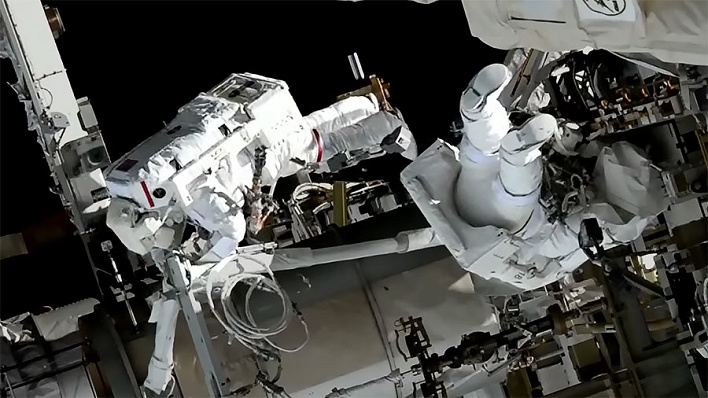NASA Astronauts Complete Exciting Spacewalk In Prep For New ISS Solar Array

Wakata and Mann began preparation for the spacewalk by turning on batteries inside their Extravehicular Mobility Units (EMUs), or spacesuits. The pair of astronauts then performed the installation of two mounting platforms as part of a planned solar array augmentation on the starboard side of the space station's truss, according to a NASA blog post.
Mann and Wakata completed the work left over from a previous spacewalk on the 1B power channel, and started the installation of a mounting platform on the 1A power channel. The modification kits being installed will enable the future installation of a roll-out solar array.
While the current solar arrays are functioning properly, NASA says they are beginning to show signs of degradation. In order to ensure there is sufficient power for NASA's exploration technology demonstrations for Artemis and beyond, the space agency is augmenting six of the eight existing power channels with new solar arrays. The new solar arrays will be a larger version of the Roll-Out Solar Array (ROSA) technology. Boeing, Spectrolab, and Deployable Space Systems (DSS) are providing the new arrays.

The spacewalk, which lasted 7 hours and 21 minutes, marked the 258th spacewalk in support of space station assembly, upgrades, and maintenance. It was also the first spacewalk for both Mann and Wakata.

